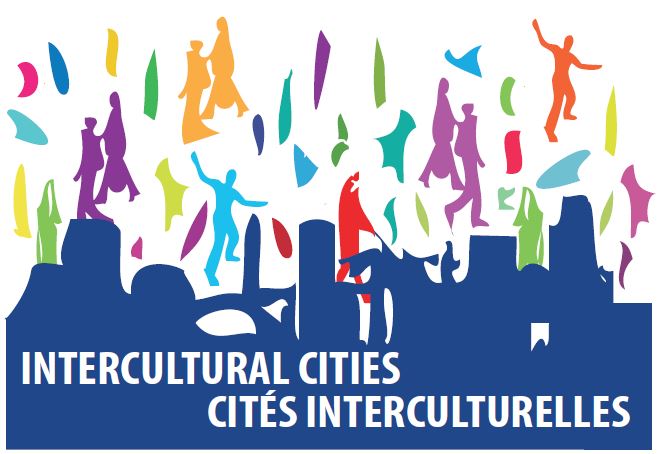With a population of about 300,000 inhabitants, of whom 40% have a migrant background, the district of Neukölln in Berlin is often defined by its distinctly intercultural and diverse nature. One growing ethnic group in the district is that of the Roma, Europe’s largest minority, which face poverty, social exclusion and discrimination across the continent. Many Roma families arrive in Berlin without any resources or knowledge of German, hoping to find a better life for themselves and their children. Despite the considerable challenges which this recent immigration from South-Eastern Europe has posed, the district of Neukölln is going to great lengths to address the issues at hand as part of a wider inclusion strategy. A comprehensive action plan has been introduced covering education, healthcare, accommodation and networking.
The first key step was to establish the ‘AG Roma’ or ‘Roma working committee’, which has brought together all relevant stakeholders such as schools, the police, youth and job centres, the city administration, NGO’s, Roma organisations and neighbourhood management. The group was then divided into further sub-committees to address specific areas such as healthcare in more depth. Enabling all stakeholders to bring their various expertise to the table was crucial to ensure that any measures taken by the district were based on the experiences of those directly affected.
Recognising education as the most important area to act on, the district has set up separate special classes for newly arrived pupils who have little or no knowledge of German. There are currently 31 of these ‘Welcome classes’ for children with no knowledge of German with a total of 417 pupils (many of whom are Roma) of all ages, who receive 30 hours intensive teaching a week . The focus is on a rapid acquisition of German so as to enable the students to quickly be integrated into the regular school system. Many of these pupils make the transition after only 3 to 4 months tuition. A ‘tandem system’ is also used in some schools which involves combining a fully qualified standard teacher with a language interpreter to aid integration into the regular curriculum. Career guidance programmes are also carried out in schools to broaden horizons and youth projects at schools attempt to break down prejudice within certain groups of the community.
Given that many Roma children have never even been to school, it has also been a priority to work together with parents to ensure that these children start attending school, which is a legal requirement. Free adult education courses in German have been made available to parents and a parent’s association has been set up with weekly free events to encourage active engagement by parents in their children’s education. A free vaccination campaign by the city council was also recently introduced and so far 681 vaccinations have taken place at 8 different primary schools. Whilst the parent’s association and vaccinations are not specifically directed per se at Roma since they aim to integrate families of all nationalities, translation of all relevant documents into Romanian and Bulgarian has ensured that Roma parents are not left in the dark.
Neukölln is also taking steps to improve the living situation of Roma in the district. The construction and accommodation watchdog (Bau- und Wohnungsaufsicht) of the city council puts a focus on it. A counselling service for tenants by a Roma NGO has been set up to try and prevent problems arising with landlords. In addition the district has mediated where conflicts have arisen due to a breakdown in communication by inviting all those involved to a meeting and addressing the issues directly. Numerous disputes have been resolved in this way.
One excellent housing project which took place with the assistance of the district administration was the complete renovation of Harzer Straße 64-67 by the Aaachener Siedlungs und Wohnungsgesellschaft (a housing company with a humanistic approach). Completed on the 14th of September 2012, the formerly mouldy and rubbish-overfilled building now offers 137 fully renovated flats, childcare facilites, rent advice and various artistic and recycling projects. Named after a famous pastor who hid away Roma during their persecution in Nazi Germany, the Arnold-Fortuin House accommodates 400 Roma residents together with other residents of German or other nationalities who rent these apartments at low cost, all of whose children are now attending the local school.
Other successful projects have also been carried out. After recognising that mainstream childcare and health services were not reaching certain minorities, the district established – already in 2007 - a programme called ‘Stadtteilmütter’ or ‘neighbourhood mothers’. The project provides mothers from a particular minority with a basic qualification in childcare and counselling techniques, which they can then use to help their own community and be paid to do so by local government. Between 2007 and 2012 6000 families were visited by Stadtteilmütter in Neukölln alone. Whilst most participants are of Turkish or Arabic descent, the first group of Roma Stadtteilmütter recently completed the qualification and can now pass the knowledge gained on within the Roma community. The district aims to reach a further 3000 migrant families by 2015.
Last but not least the district has been raising awareness of the challenges brought about by increased immigration from South-Eastern Europe as well as informing stakeholders about what is being done to address them. This applies to both influencing federal policy by publishing extensive status reports on the situation of Roma in Neukölln, breaking down prejudices through exhibitions in local galleries, and courses for social workers in dealing with anti-Roma sentiment.
There still remains a great deal to be done but Neukölln is acting decisively to improve the integration of Roma as part of its wider integration policy. Only by continuing these efforts can the district benefit from the different cultural skills and attributes offered by this increased diversity. Other cities across Europe which have Roma populations can and should draw inspiration or best practices from these policies, particularly in education given the success of the ‘Welcome classes’.



